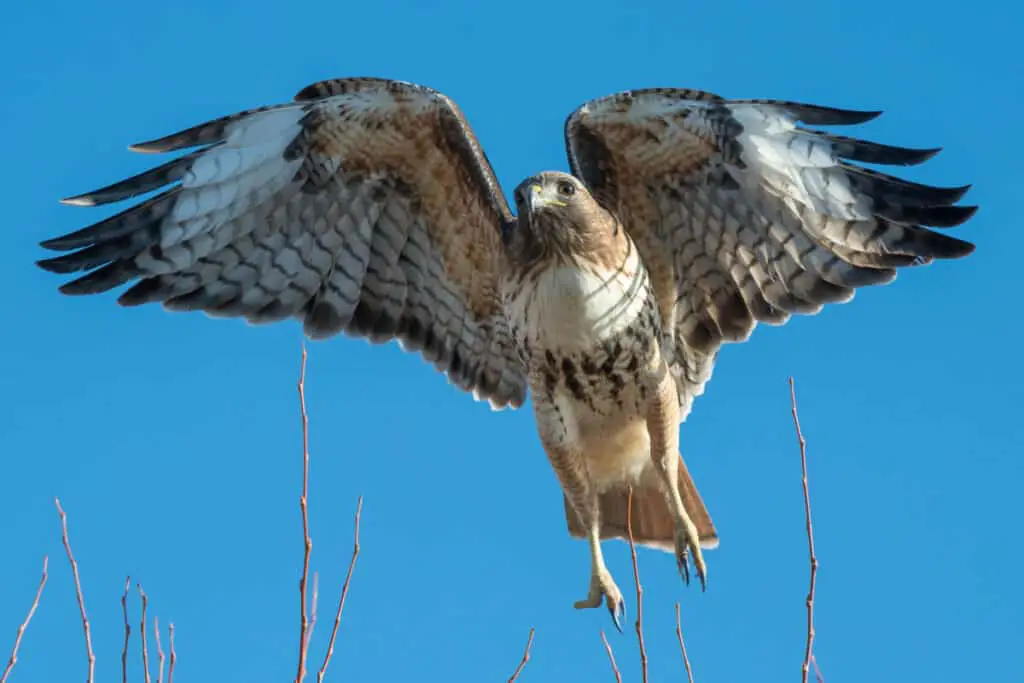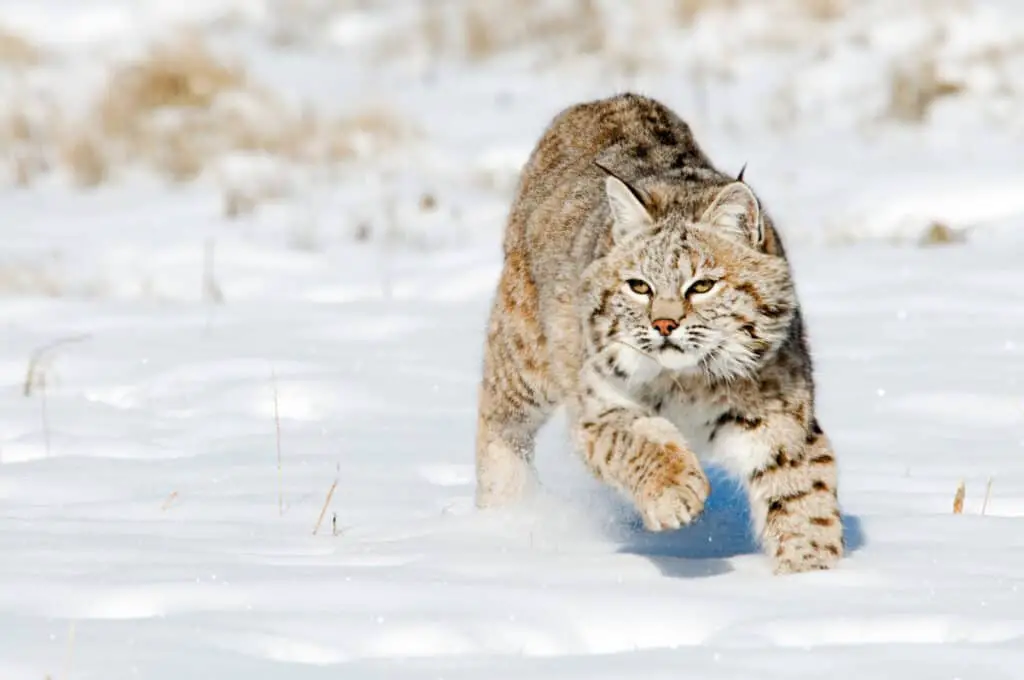Cottontail rabbits are small, herbivorous mammals that inhabit a variety of habitats across North and South America. These rabbits serve as important prey for numerous predators within their respective ecosystems, playing a vital role in the food chain.
The predation on cottontails is an intriguing area of study due to the wide range of predators involved. The diet and habits of cottontail rabbits make them vulnerable to various types of predators. As ground-dwelling creatures, they face threats from both aerial and terrestrial predators alike. Additionally, their reduced mobility and lack of protective adaptations further increase their susceptibility to predation.
Understanding these factors can help us comprehend how different species interact with each other in natural environments while also highlighting the ecological significance of cottontail rabbit populations. This article aims to explore the diverse group of animals that predate on cottontail rabbits, shedding light on this often overlooked aspect of wildlife biology.

Aerial Predators Of Cottontail Rabbits
Cottontail rabbits are commonly preyed upon by various aerial predators, including hawks, eagles, and owls. These birds of prey have keen eyesight and hunting abilities that allow them to spot cottontails from high above their nesting habitats in forests, fields, or even suburban neighborhoods. They use different techniques when hunting these small mammals – some may swoop down and grab the rabbit with their talons while others wait patiently for an opportunity to pounce.
One such predator is the red-tailed hawk, which is known for its ability to adapt to a variety of environments and food sources. This bird typically hunts during daytime hours and uses its sharp vision to locate potential prey on the ground. Once it spots a cottontail rabbit, it will dive down at high speed towards its target before snatching it up with its powerful claws.
Similarly, great horned owls also pose a significant threat to cottontails due to their nocturnal hunting habits and silent flight capabilities. Owls perch quietly on tree branches or other elevated surfaces waiting for unsuspecting prey like cottontail rabbits to pass by before attacking them swiftly and silently.
Terrestrial Predators Of Cottontail Rabbits
Cottontail rabbits are preyed upon by various terrestrial predators. These predators have adaptations that allow them to effectively hunt and kill cottontails. Hunting behavior varies among predator species, but generally involves stalking or ambushing the rabbit.
Prey detection is a crucial aspect of hunting for these predators. Many use keen senses such as sight, smell, and hearing to locate their prey. For example, coyotes will often listen for rustling in dense brush where rabbits may be hiding, while bobcats rely heavily on their eyesight to spot movement from a distance.
Other common predators of cottontail rabbits include red foxes and domestic dogs who also employ similar tactics when hunting small mammals.
These predators pose a significant threat to the survival of cottontail rabbits in many areas. Their ability to detect prey combined with effective hunting strategies means that they can quickly catch and kill unsuspecting rabbits. It is important for conservation efforts to take into account the impact of these predators on local populations of cottontails, especially in areas where human activity has caused habitat fragmentation or destruction.
The Role Of Habitat In Predation
The role of habitat in predation is a crucial factor that cannot be overlooked when looking at the predators of cottontail rabbits.
The vegetation within their habitats plays an important role in providing cover and shelter for these furry creatures, which reduces their visibility to potential predators. By blending into their surroundings, they can evade detection by birds of prey such as hawks or owls.
Moreover, the impact of climate on predation also affects the population of cottontail rabbits. In areas with harsher climates, there may be fewer predators due to reduced accessibility to food sources. Conversely, warmer regions tend to have more diverse populations of predators since warm weather provides suitable conditions for breeding and hunting.
Ultimately, understanding how different habitats and climatic patterns influence predator-prey interactions can help conservationists develop strategies to protect vulnerable species like cottontail rabbits from extinction without disrupting natural ecosystems.
The Impact Of Predation On Cottontail Rabbit Populations
Habitat plays a crucial role in predation, especially for cottontail rabbits. The availability of suitable habitat affects the number and types of predators that can hunt them. For example, areas with dense vegetation provide shelter for rabbits from visually-oriented predators such as hawks and owls, but may also increase encounters with ground-dwelling predators like foxes or coyotes. Similarly, open fields may reduce hiding places from aerial hunters but could limit access to food sources.
Predators have a significant impact on population dynamics of cottontail rabbits. Predation rate is influenced by various factors including predator density, prey abundance, and food availability. When rabbit populations are high relative to their predators, there will be more opportunities for hunting success resulting in higher rates of predation which could lead to declines in rabbit numbers over time. Conversely, when food availability is low, prey animals become vulnerable to predation because they must spend more time searching for limited resources instead of avoiding danger.
Thus understanding the interaction between habitat structure and food availability is critical in managing rabbit populations and reducing impacts of predation.
- Factors affecting predation rate include predator density, prey abundance, and food availability.
- High prey populations relative to predator densities result in increased vulnerability.
- Low food availability increases susceptibility to predators.
- Habitat structure influences both the type and frequency of predator-prey interactions.

Behavioral Adaptations Of Cottontail Rabbits
Cottontail rabbits are small, herbivorous mammals that inhabit different ecosystems throughout North and South America. Despite their cute appearance, they face a variety of predators in the wild. Some of these predators include coyotes, foxes, bobcats, owls, hawks, snakes, and domestic dogs.
To survive in such an environment where predation is high, cottontail rabbits have developed various behavioral adaptations. One adaptation is their feeding habits; they often feed at dawn or dusk when it is less likely for predators to be out hunting. They also prefer areas with dense vegetation cover as it provides them with hiding places from potential threats. Cottontails also use burrows dug by other animals or create shallow depressions under bushes for shelter against harsh weather conditions and predators.
| Reproductive Strategies | Description |
|---|---|
| Short Gestation Periods | Female cottontails can give birth to multiple litters each year due to their short gestation period of only 30 days on average |
| Camouflaging Young | Newborn cottontail rabbits have a lack of scent and are camouflaged with brown fur which helps them blend into their surroundings |
In terms of reproductive strategies, cottontails reproduce quickly due to their short gestation periods. Females can produce several litters per year consisting of up to six young ones per litter. Additionally, newborn cottontails possess camouflage-like markings and are born without scent glands to avoid detection from predators until they grow big enough to fend for themselves. These behaviors allow cottontail rabbits to thrive despite living in environments full of natural dangers like predation.
Predation And Ecological Significance
Cottontail rabbits are known for their behavioral adaptations that help them survive in the wild. However, even with these adaptations, cottontails remain vulnerable to predators.
Predators of cottontail rabbits include a wide range of animals such as coyotes, foxes, bobcats, owls, hawks, snakes, and domestic cats. The presence of predators plays an important ecological role by controlling the population size of cottontails and other small mammals.
Predation also affects food web dynamics since it influences not only the abundance but also the behavior of prey species. For example, when there is high predation pressure on cottontails during breeding season, they may alter their reproductive strategies by producing more offspring or delaying breeding until conditions become favorable for survival.
These changes can have cascading effects on other organisms in the ecosystem that depend on cottontails as a food source. The importance of understanding predator-prey relationships lies in recognizing how each organism fits into the larger picture of ecosystem functioning.
Cottontail rabbit predation has direct and indirect effects on many different components within an ecosystem including plants and insects. By studying these interactions between predators and prey species like cottontails, ecologists can gain insight into how ecosystems function and develop conservation strategies to maintain healthy populations throughout trophic levels of various ecosystems without causing adverse impacts elsewhere in those systems than could be caused by overpopulation or underpopulation of certain species.
Conservation Efforts For Cottontail Rabbits And Their Predators
Conservation strategies for cottontail rabbits are critical to maintaining their populations. One approach is habitat conservation, which involves protecting and enhancing the areas where these rabbits live. This can include managing vegetation to provide food and cover, creating brush piles for shelter, and reducing fragmentation by preserving large tracts of land.
Another strategy is predator control, which involves limiting or removing predators that threaten rabbit populations. Hunting regulations also play a role in conserving cottontail rabbits. Regulations may limit hunting seasons or bag limits to prevent over-harvesting of rabbit populations. Additionally, hunters can be required to use non-toxic shot to reduce lead poisoning in both game animals and scavengers that consume carcasses.
By implementing effective conservation strategies and hunting regulations, we can help ensure the long-term survival of cottontail rabbits and their predators alike.
It is crucial that all stakeholders work together towards this common goal so that future generations have the opportunity to enjoy these amazing creatures in the wild. Heartbreaking: Cottontail rabbits face many challenges including habitat loss due to development.
Conclusion
Cottontail rabbits are a common prey species for many predators, both aerial and terrestrial. Hawks, eagles, owls, coyotes, foxes, weasels, snakes, and domestic dogs and cats are all known to hunt cottontails.
Habitat plays an important role in predation risk for these small mammals. Predation can have significant impacts on the population dynamics of cottontail rabbits.
However, they have developed behavioral adaptations such as hiding in dense vegetation or remaining motionless to reduce their likelihood of being detected by predators.
Understanding the ecological significance of predation is crucial for conservation efforts aimed at protecting both cottontail rabbits and their predators.
By maintaining healthy ecosystems with diverse predator populations, we can ensure the survival of all species involved.

